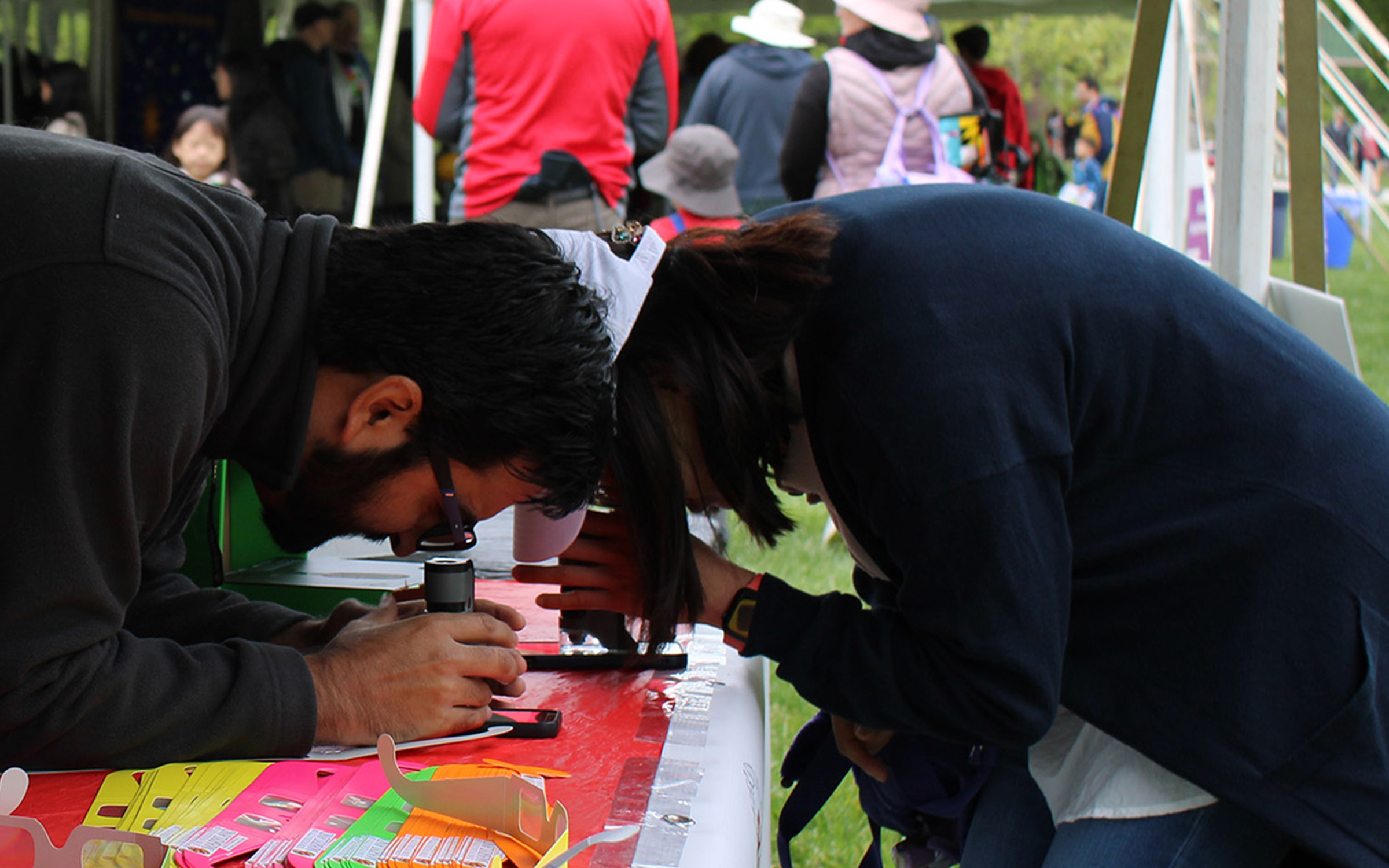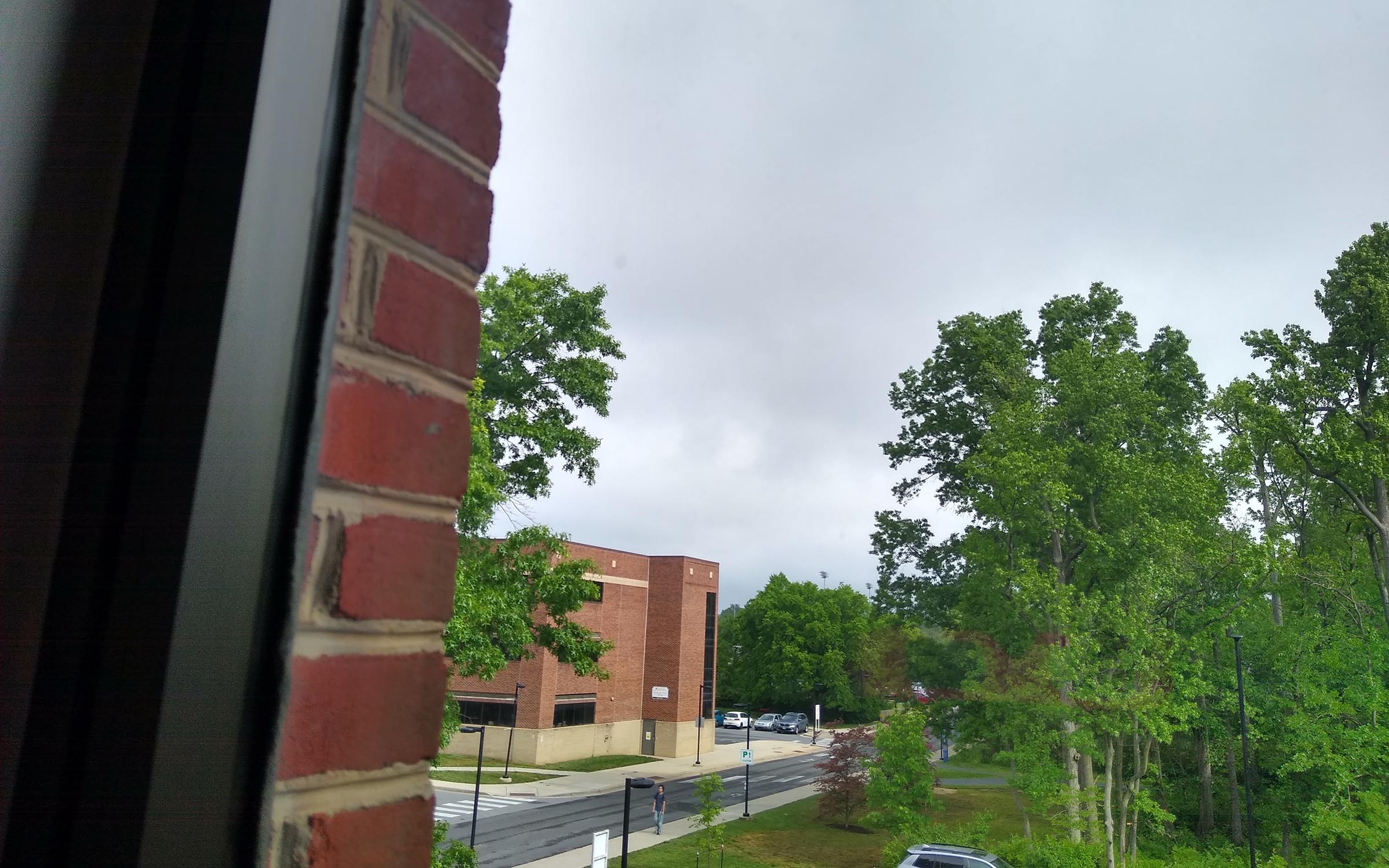Maryland Day 2024
Members of the Institute for Research in Electronics and Applied Physics presented experiments in electromagnetism, optics, and heliophysics at Maryland Day 2024.
Members of the Institute for Research in Electronics and Applied Physics presented experiments in electromagnetism, optics, and heliophysics at Maryland Day 2024.
Dr. Brian Beaudoin, Graduate Student Hanqing Ma, and Prof. Carlos Rios Ocampo.
Dr. Brian Beaudoin is explaining magnetism to future scientists using ferrofluid (in the petri dish in his right hand) and holding a magnet in his left hand. The ferrofluid was later transferred from the petri dishes to Mason jars, making it easier to use in the experiment. Graduate Student Hanqing Ma is on the right.
Brian Beaudoin, Hannah McCright, Alexandra Pick-Aluas
Hannah McCright explaining ferrofluid, a magnetic fluid in the Mason jars.
Ferrofluid is a liquid that is attracted to the poles of a magnet. The ferrofluid was placed in the Mason jar, and the magnet was placed under the jar resulting in the ferrofluid aligning itself to the magnetic field lines of the magnet. The top was removed from the Mason jar and the picture was taken.
Richard Brewster explaining the theremin.
Future engineers and physicists playing with a theremin, a musical instrument that works using circuits. It makes the eerie sound you hear in old movies.
The theremin, originally known as the aetherphone, etherphone, thereminophone or termenvox/therminvox) is an electronic musical instrument controlled without physical contact by the performer (who is known as a thereminist). It is named after its investor, Leon Theremin, who patented the device in 1928.
The instrument's controlling section usually consists of two metal antennas which function not as radio antennas but rather as position sensors. Each antenna forms one half of a capacitor with each of the thereminist's hands as the other half of the capacitor. These antennas capacitively sense the relative position of the hands and control oscillators for frequency with one hand, and amplitude (volume) with the other. The electric signals from the theremin are amplified and sent to a loudspeaker.
The sound of the instrument is often associated with eerie situations. The theremin has been used in movie soundtracks such as Miklós Rózsa's Spellbound and The Lost Weekend, Bernard Herrmann's The Day the Earth Stood Still, and Justin Hurwitz's First Man, as well as in theme songs for television shows such as the ITV drama Midsomer Murders and the Disney+ series Loki, the latter composed by Natalie Holt. The theremin is also used in concert music (especially avant-garde and 20th- and 21st-century new music); for example, Mano Divina Giannone is a popular American thereminist[citation needed] who along with his orchestra, The Divine Hand Ensemble, regularly holds said concerts. It is also used in popular music genres, such as rock.
Dr. Gyan Prakash uses a microscope to observe the individual pixels on a cellphone to see the red, green, and blue lights that combine to make colored pixels.
Prof. Carlos Rios Ocampo demonstrates how color forms in the cellphone screen by looking at the RGB pixels with a microscope.

Prof. Carlos Rios Ocampo
Hologram experiment set up in cardboard box at Maryland Day.
 Butterfly hologram set up by Meredith Pettit in a very, very dark room on Maryland Day.
Butterfly hologram set up by Meredith Pettit in a very, very dark room on Maryland Day.
Dr. Jeffrey Schwartz demonstrates how beautiful color patterns form in transparent objects using light polarization.
Dr. Jeffrey Schwartz explains diffraction using diffraction "grating" rainbow glasses, which have an atomic structure that cause light to diffract at different angles depending on the color and frequency.
Richard Brewster is explaining diffraction using diffraction grating rainbow glasses and laser pointers.
 Looking out the window without diffraction glasses.
Looking out the window without diffraction glasses.
 The same scene using diffraction grating rainbow glasses.
The same scene using diffraction grating rainbow glasses.
Dr. Marc Swisdak at the solar physics display table.
Graduate Student Hanqing Ma looking at space stickers with a young attendee.
Dr. Meriem Alaoui is explaining the magnetic nature of the Sun and how it is responsible for solar "explosions" (solar flares and coronal mass ejections). The colored pictures of the Sun were taken few second apart by the Solar Dynamics Observatory (SDO), a current NASA spacecraft launched in 2010. The different colors are taken through different filters and show various features like sunspots and a myriad of magnetic loops which lie mostly along the equator.
One bit hit was a picture called a magnetogram, which shows the magnetic field strength and polarity (North or South poles) across the Sun's surface. We fixed tiny magnets at the back of various images to match the polarities in the magnetograms, and provided magnaprobes to help visitors explore these polarities and the features they correspond to in other images. For example, a magnetic loop would correspond to a specific set of north-south poles.
We wish to thank Meredith Pettit, Chair of the IREAP Maryland Day 2024 Committee, for taking the pictures and for her untiring efforts to make IREAP's presentations at Maryland Day a huge success. We also thank our volunteers who braved the cold, rainy weather to present and explain our experiments to the many people who attended the event: Hannah McCright, Hanqing Ma, Alexandra Pick-Aluas, Drs. Meriem Alaoui, Brian Beaudoin, Richard Brewster, Gyan Prakash, Jeffrey Schwartz, and Marc Swisdak, and Prof. Carlos Rios Ocampo.
Webpage: Dorothea F. Brosius
Archive: Maryland Day 2023